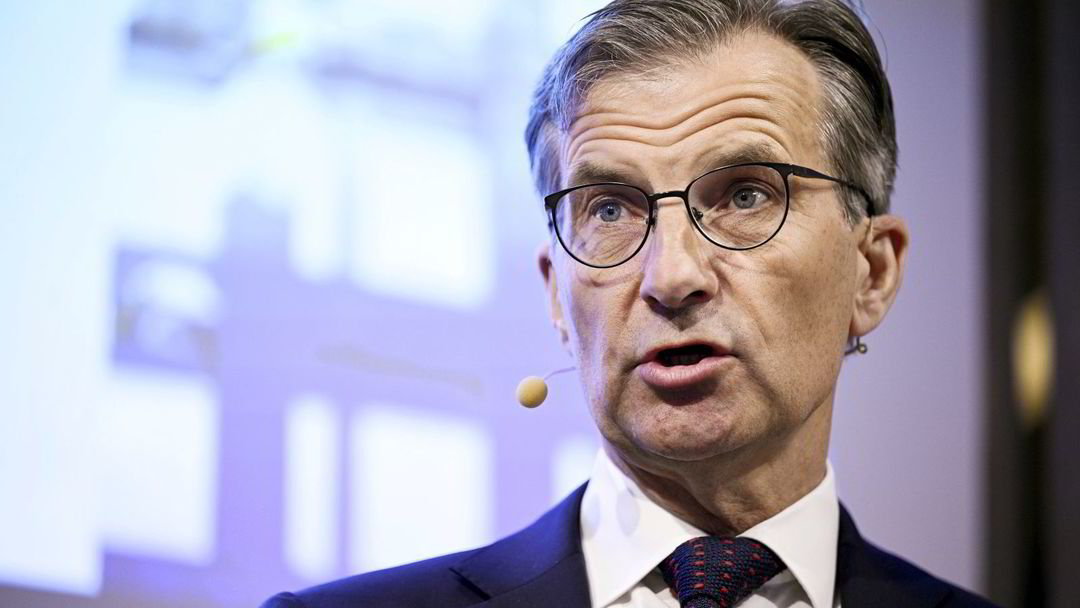Sweden’s central bank, the Riksbank, raised its key interest rate to 3.75 percent on Thursday morning. Upfront, a 0.25 percentage point rise was expected, according to estimates obtained by Bloomberg.
The Riksbank estimates that it will raise interest rates again this year. The central bank also decided to increase the rate of government bond sales from SEK 3.5 billion to SEK five billion per month starting from September this year.
Today’s rate hike is the seventh in a row by the Riksbank, which many agree belatedly started to tighten monetary policy when inflation in the neighboring country began to take its toll last year.
Sweden’s main interest rate is at its highest level in more than 15 years.
Economists expect interest rates to rise twice this year
Today’s interest rate announcement is Erik Teiden’s third as central bank governor, following the resignation of Stefan Ingves at the end of his term at the turn of the year. Thedéen and the MPC point out that inflation remains well above the 2% target, and that the Swedish krona can help keep inflation high.
– The press release indicates that there is a risk that the impact of the krone on price increases will be greater in light of the current situation of high inflation.
The Swedish krona made a slight jump shortly after the interest rate announcement, but the krona quickly fell back to its starting point. At 09.45, the price of 100 SEK is 100.16 NOK.
The inflation figures from last month did not add pressure on the Riksbank, but the Swedish real economy again showed more resilience than previously thought, Marius Gönsholt Hof, chief economist at Handelsbanken Capital Markets wrote in a report Thursday morning.
Other central banks have made a series of hawkish announcements on interest rates recently, and the weakness of the Swedish krona is a constant concern for the Riksbank. Ergo, the interest rate continues to rise today, and our Swedish analysts also believe that the interest rate will rise further in September and November, to 4.25 percent, he writes further.
He adds that the immediate weakness should be viewed in light of the fact that there is a risk of a double-digit rally.
Before today’s rate announcement, it was not entirely out of the question that there would be a double hike, as the Riksbank did at the previous rate meeting in April.
Low price growth
Price growth in Sweden from May 2022 to May this year ended at 9.7 percent, after an annual rate of 10.5 percent in April. From April to May, prices rose 0.3 percent.
Thus, May marked the third month in a row where price growth slowed year-on-year.
In Sweden, consumer prices are measured a little differently than here at home. Since 2008, the Savings and Credit Bank has been working with KPIF, or CPI, with a fixed interest rate, which removes the effect of changing interest rates, but still takes into account changes in energy prices. CPIF replaced CPI as a target variable for the Riksbank’s inflation target in autumn 2017, and has been included in the SCB’s official statistics since 2018.
The commodity price index, which is fixed-rate price growth, rose 6.7 percent year-on-year in May.
The Savings and Credit Union also has a fixed-rate CPI, but it excludes changes in energy prices, with the exception of the CPIF for energy. And so that’s very similar to what we associate here at home with core inflation, and as energy prices are higher today, it will give a better expression to the underlying price changes.
The CPIF excluding energy index ended May at 8.2 percent year-on-year, down from 8.4 percent in April.(conditions)Copyright Dagens Næringsliv AS and/or our suppliers. We’d like you to share our statuses using links that lead directly to our pages. Reproduction or other use of all or part of the Content may only be made with written permission or as permitted by law. For more terms see here.

“Organizer. Social media geek. General communicator. Bacon scholar. Proud pop culture trailblazer.”

